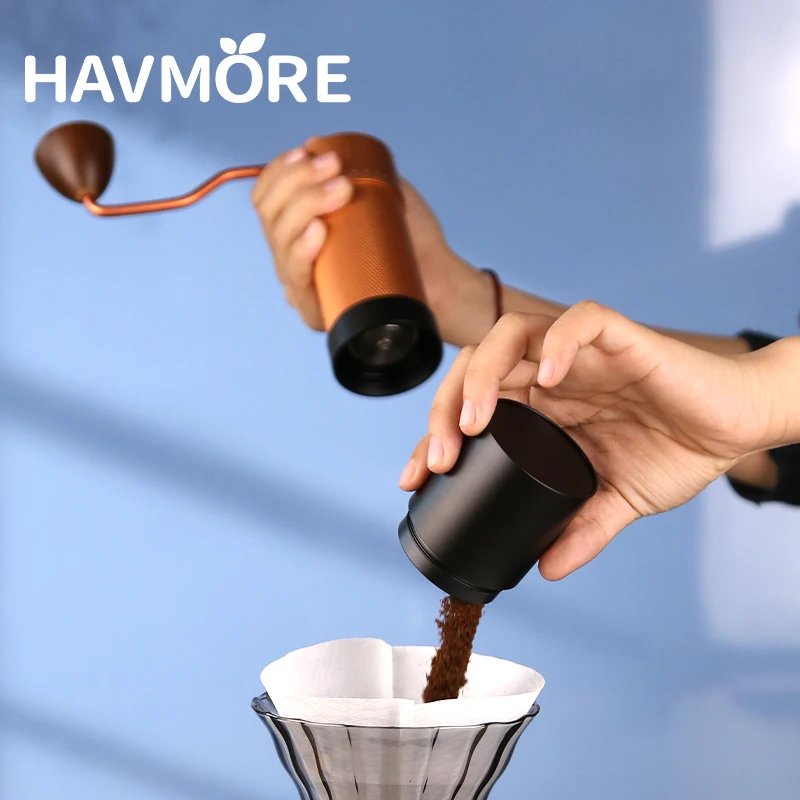Why Grind Size Is The Most Critical Factor For Espresso Excellence
When it comes to brewing exceptional espresso, no single factor impacts your results more than grind size. While many coffee enthusiasts focus on expensive machines or exotic beans, the truth is that the size of your coffee particles fundamentally determines whether your espresso will shine or disappoint.
Proper grind size directly affects how water flows through your coffee puck. Too coarse, and water rushes through too quickly, producing a sour, under-extracted shot. Too fine, and water struggles to pass through, resulting in bitter, over-extracted coffee. This delicate balance makes grind size the true cornerstone of espresso perfection.
What’s even more impressive is how small adjustments can create dramatic differences. A tiny change in grind size—sometimes just a fraction of a millimeter—can transform a mediocre espresso into a balanced, sweet, and complex experience with rich crema and perfect body.
Did you know that professional baristas estimate that roughly 70% of espresso extraction problems can be traced back to incorrect grind size? This single variable affects extraction time, pressure buildup, flavor balance, and visual appearance of your shot.
In this guide, you’ll learn how to:
– Diagnose common extraction problems by observing your shots
– Make precise grind adjustments to fix specific issues
– Develop a systematic approach for consistent results
– Understand how grind size interacts with other brewing variables
Understanding the optimal grind size numbers for espresso is the foundation for developing barista-level skills. By mastering this crucial variable, you’ll be equipped to troubleshoot common extraction problems and consistently produce café-quality results at home.
The journey to espresso excellence begins with selecting the right equipment. Fine adjustment hand grinders provide the precision control necessary for perfecting espresso, allowing you to make the micro-adjustments that make all the difference in your cup.
Understanding Espresso Extraction: The Science Behind The Perfect Grind
To master espresso grind adjustment, you first need to understand what happens during extraction and why particle size matters so much.
What Is The “Ideal” Espresso Grind?
The perfect espresso grind is typically finer than table salt but coarser than flour—often compared to fine sugar or sand. When rubbed between your fingers, properly ground espresso coffee should feel slightly gritty but not powdery. It tends to clump slightly due to the natural oils in the coffee beans, especially with darker roasts.
This specific size range is critical because espresso extraction operates under unique conditions: high pressure, short contact time, and hot water forced through a compressed puck of coffee.
The Surface Area Principle
The science behind grind size comes down to surface area. When you grind coffee beans finer, you create more surface area for water to contact. This increased surface area allows water to extract flavors more efficiently.
For espresso, this principle is especially important because:
– Water contacts the grounds for only 20-30 seconds (compared to minutes for other brewing methods)
– The extraction happens under 9 bars of pressure (roughly 130 psi)
– We’re targeting a concentrated form of coffee with complex flavors
Understanding the impact of particle size on flavor extraction helps explain why small grind adjustments create big flavor differences. When particles are too large (too coarse), water rushes through the gaps between them too quickly, extracting only the easily accessible compounds—primarily acids. This results in sour, bright, and underdeveloped flavors.
Conversely, when particles are too small (too fine), water struggles to pass through, over-extracting bitter compounds and creating resistance that can lead to channeling—where water finds paths of least resistance through the puck, resulting in uneven extraction.
Resistance and Flow
The relationship between grind size and extraction physics is fundamental to espresso. The finer you grind, the more resistance you create. This resistance:
- Slows down the flow rate of water through the coffee
- Increases the contact time between water and coffee
- Builds pressure within the puck
- Affects how evenly extraction occurs throughout the puck
Finding the perfect balance of resistance is the essence of dialing in your grind size. When properly calibrated, water flows through the puck at the ideal rate, extracting the right balance of flavors—not too quickly (under-extracted) or too slowly (over-extracted).
Identifying Extraction Issues: Reading Your Espresso Shot
Learning to diagnose extraction problems is essential for making the right grind adjustments. Your espresso will tell you what’s wrong—you just need to know how to interpret the signs.
Under-Extraction: Symptoms of Too Coarse a Grind
When your grind is too coarse, water passes through the coffee too quickly, resulting in under-extraction. Look for these telltale signs:
Taste Indicators:
* Pronounced sourness or acidity that dominates the flavor
* Salty or briny notes that shouldn’t be prominent
* Lack of sweetness and depth
* Sharp, one-dimensional flavor that disappears quickly
* “Empty” finish with little aftertaste
Visual Cues:
* Shot pulls faster than 20 seconds (often 15-18 seconds)
* Coffee stream starts blonde and watery almost immediately
* Thin, pale crema that dissipates quickly
* Stream may look “gushy” rather than steady
* Volume fills too quickly in the cup
Mouthfeel Characteristics:
* Watery, thin body lacking richness
* Little texture or viscosity
* Feels “hollow” in the mouth
Over-Extraction: Symptoms of Too Fine a Grind
Conversely, when your grind is too fine, water struggles to pass through, resulting in over-extraction. Watch for:
Taste Indicators:
* Dominating bitterness, especially at the finish
* Astringent quality that dries out your mouth
* Burnt, ashy, or charred notes
* Medicinal or quinine-like flavors
* Any sweetness is overshadowed by harsh notes
Visual Cues:
* Shot pulls very slowly, often exceeding 35-40 seconds
* Coffee may barely drip rather than flow
* Extremely dark crema, possibly with tiger-striping or spotting
* Visible channeling (spritzers or uneven flow from portafilter)
* Shot volume builds very slowly
Mouthfeel Characteristics:
* Overly heavy, almost muddy texture
* Lingering dryness or astringency
* Can feel syrupy but in an unpleasant way
Understanding the relationship between grind size and shot timing gives you a reliable metric for making adjustments. Generally, aim for a 25-30 second extraction for a 2:1 brew ratio (e.g., 18g coffee yielding 36g espresso). Shots consistently running shorter or longer than this range often indicate a grind size issue.
By learning to read these signals, you’ll develop the diagnostic skills needed to make appropriate grind adjustments. Remember that these signs work together—taste, appearance, and timing all provide clues that help you pinpoint exactly what needs changing.
Essential Equipment For Precision Grinding
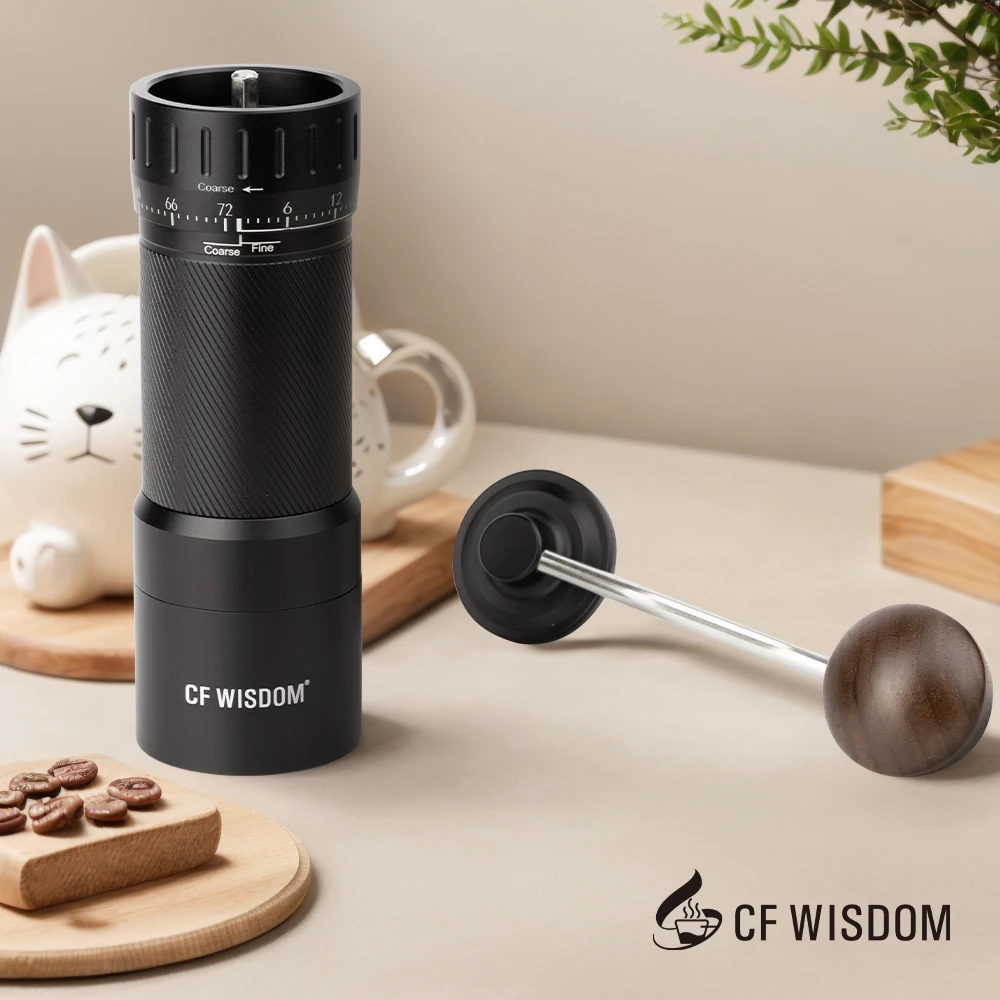
Creating perfect espresso requires tools that provide consistency and precision. Your equipment choices directly impact your ability to make the fine adjustments necessary for espresso excellence.
The Critical Role of Burr Grinders
The single most important tool for espresso preparation is a quality burr grinder. Unlike blade grinders—which chop beans randomly and produce inconsistent particle sizes—burr grinders crush beans between two textured surfaces, creating uniform particles.
For espresso, this consistency is non-negotiable. Research has shown that burr grinders produce significantly more uniform particle distribution, with studies finding that high-quality burr grinders can achieve up to 70% more consistency in particle size compared to blade grinders.
Conical vs. Flat Burr Considerations:
- Conical burrs tend to produce slightly more fines (very small particles), which can add body to espresso but may require more attention to avoid over-extraction
- Flat burrs generally create more uniform particle size distribution, potentially offering more clarity in flavor but sometimes at the cost of some body
Essential Equipment Checklist
To systematically dial in your espresso grind, you’ll need:
- Quality burr grinder with fine adjustment capability – The cornerstone of your setup, allowing for the micro-adjustments needed for espresso
- Consistent tamper – Preferably 58mm (or sized to match your portafilter) to ensure even compression of the coffee bed
- Precision scale (0.1g accuracy) – For measuring both dose and yield consistently
- Timer or shot timer feature – To track extraction time accurately
- Matched portafilter and basket – Compatible with your espresso machine
- Fresh coffee beans – Ideally 7-21 days from roast date for optimal extraction
The choice of precision manual grinders specifically designed for espresso can make a tremendous difference in your results. These grinders offer the fine adjustment capabilities necessary for dialing in espresso, often featuring adjustment mechanisms with clearly defined steps or continuous adjustment.
For home baristas seeking café-quality results, investing in espresso-focused manual grinders provides a cost-effective way to achieve the precision that commercial grinders offer. The key differences between burr and blade grinders become especially apparent when working with espresso, where small inconsistencies are magnified in the cup.
Remember, even the most expensive espresso machine cannot compensate for an inadequate grinder. The grinder is your most crucial piece of equipment in the espresso-making process.
The Step-By-Step Grind Adjustment Process
Now that you understand the theory and have the right equipment, let’s walk through a systematic approach to dialing in your espresso grind size.
1. Establishing Your Baseline
Before making any adjustments, you need a starting point:
- Set your initial parameters:
- Dose: 18g of coffee (adjust based on your basket size)
- Target yield: 36g of espresso (2:1 ratio)
Time target: 25-30 seconds
Choose a starting grind setting:
- If your grinder has an espresso range, start in the middle
- If not, start with a fine setting (similar to table salt or slightly finer)
- With a new coffee, err on the side of too fine rather than too coarse
2. Preparing and Pulling Your Diagnostic Shot
Consistency in preparation is crucial for accurate diagnosis:
- Grind your coffee directly into the portafilter
- Distribute the grounds evenly (using a distribution tool if available)
- Apply consistent pressure when tamping (aim for about 30 pounds of pressure)
- Lock the portafilter into the machine and start brewing immediately
- Start your timer as soon as you begin the shot
3. Observing Extraction Variables
As the shot pulls, carefully observe:
- Flow development:
- How long until the first drops appear (ideally 4-7 seconds)
- Color progression (should transition from dark to caramel to blonde)
Consistency of the stream (should be steady like warm honey)
Timing:
- Note the total extraction time
- Watch for the “blonde moment” when the stream lightens significantly
4. Evaluating the Results
Once the shot is complete:
- Visual assessment:
- Check the appearance of the crema (color, persistence, texture)
Look for signs of channeling in the spent puck
Taste evaluation:
- Note the initial flavor impression (acidity, sweetness)
- Pay attention to the mid-palate (body, balance)
- Evaluate the finish (lingering sweetness or bitterness)
5. Making Precise Adjustments
Based on your observations, adjust your grind:
- If the shot was too fast and tastes sour (under-extracted):
- Adjust grinder finer
- Make smaller adjustments for slight issues, larger ones for dramatic problems
- With stepless grinders, aim for about 1/8 of a turn
With stepped grinders, move 1-2 clicks finer
If the shot was too slow and tastes bitter (over-extracted):
- Adjust grinder coarser
- Again, match adjustment size to severity of issue
Remember that small changes make big differences
Purging between adjustments:
- After changing settings, grind and discard 5-10g of coffee
- This clears any coffee ground at the previous setting
Learning to make precise grind adjustments for espresso is a skill that develops with practice. The key is to make methodical, incremental changes rather than dramatic ones.
6. Repeating the Process Systematically
Dialing in is an iterative process:
- Pull another shot using the new setting
- Keep all other variables consistent (dose, tamp pressure, etc.)
- Continue evaluating and adjusting until you achieve:
- Balanced flavor (neither sour nor bitter)
- Proper extraction time (25-30 seconds)
- Appropriate flow rate and visual indicators
Once you’ve found your perfect espresso grind size, note the setting for future reference. Remember that you’ll need to repeat this process whenever you change coffee beans, as different beans, roasts, and ages require different grind settings.
Common Extraction Problems: The Grind-Focused Solutions Table
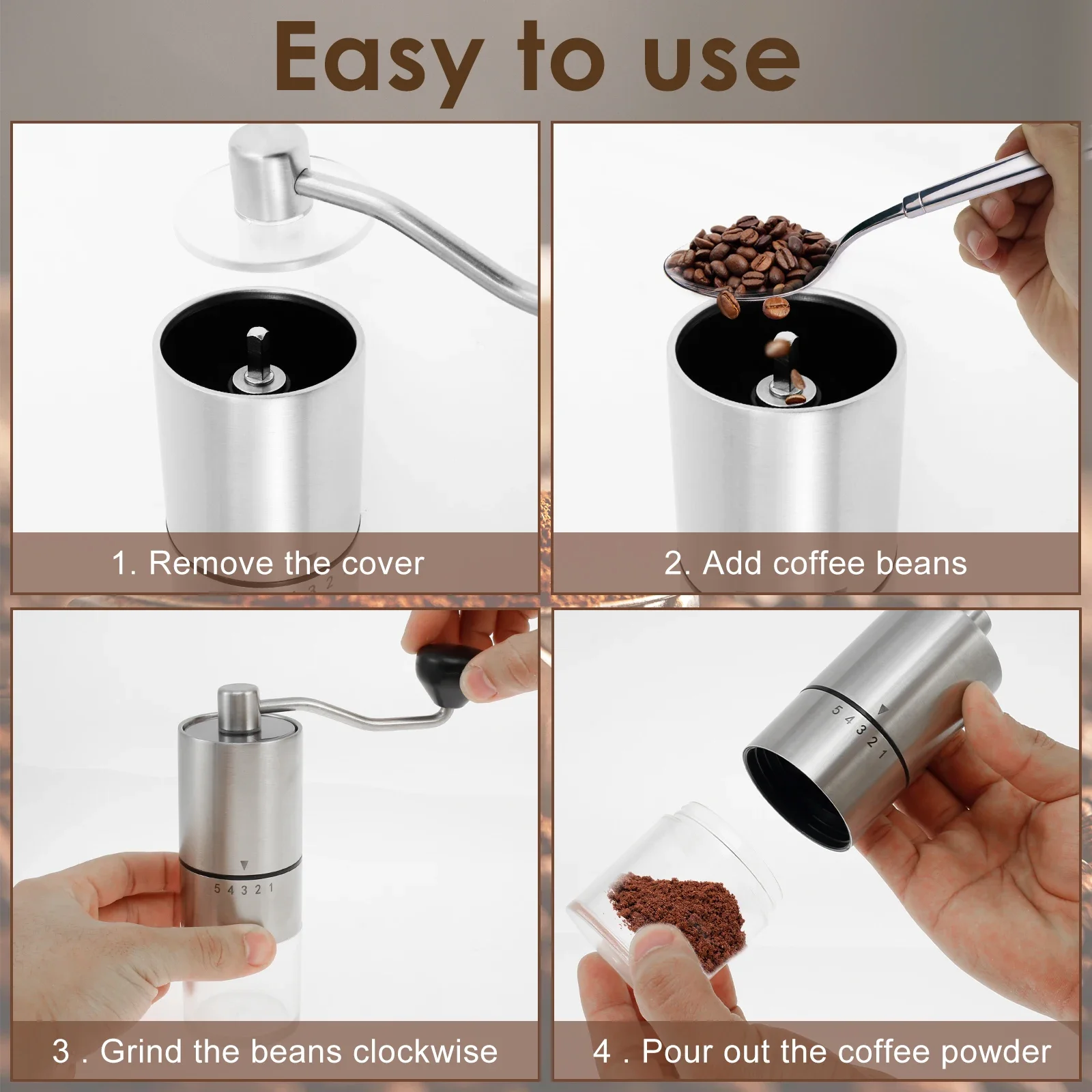
Use this troubleshooting guide to identify common extraction issues and apply the appropriate grind adjustments:
| Problem | Taste Indicators | Visual Cues | Grind Adjustment | Other Considerations |
|---|---|---|---|---|
| Fast Shot / Under-extraction | Sour, sharp, lacking sweetness | Shot under 20 seconds, pale crema | Make grind finer (1-2 settings) | Check for channeling; ensure even distribution |
| Slow Shot / Over-extraction | Bitter, astringent, burnt | Shot over 35 seconds, dark crema | Make grind coarser (1-2 settings) | Reduce dose slightly if still too slow |
| Inconsistent Flow / Channeling | Combination of sour and bitter | Spurting, uneven flow, holes in puck | Improve distribution, then adjust grind | Check for clumping; consider WDT tool |
| Weak or Disappearing Crema | Thin flavor, lacking body | Pale, quick-dissipating crema | Make grind slightly finer | Check coffee freshness; consider fresher beans |
| Uneven Extraction / “Dead Spots” | Muted flavor, underdeveloped | Dry spots in spent puck | Focus on distribution before changing grind | Consider a distribution tool |
| Balanced but Weak Flavor | Correct balance but lacking intensity | Good timing but thin mouthfeel | Increase dose slightly without changing grind | Or try slightly finer grind with same dose |
| Balanced but Too Intense | Correct balance but overwhelming | Good timing but heavy mouthfeel | Decrease dose slightly without changing grind | Or try slightly coarser grind with same dose |
Remember that these adjustments should be incremental. Making dramatic changes to your grind setting can overshoot the target, leaving you further from the ideal extraction.
Mastering The Variables: How Grind Interacts With Other Factors
While grind size is fundamental to espresso extraction, it doesn’t exist in isolation. Understanding how grind interacts with other variables helps you make more nuanced adjustments.
Dose and Grind Relationship
Dose (the amount of coffee used) directly affects how your grind setting performs:
- Higher dose + same grind = increased resistance and longer extraction time
- Lower dose + same grind = decreased resistance and shorter extraction time
When changing your dose, remember:
* Increasing dose by 1g typically requires coarsening the grind slightly
* Decreasing dose by 1g typically requires fining the grind slightly
This relationship exists because the water must travel through more coffee with a higher dose, increasing extraction time even if the grind remains unchanged.
Brew Ratio Considerations
Your target yield (how much espresso you’re producing) affects your optimal grind setting:
- Ristretto (1:1 to 1:1.5 ratio) typically requires a finer grind
- Normal espresso (1:2 ratio) uses the standard grind setting
- Lungo (1:3 or longer ratio) generally needs a coarser grind
These adjustments help maintain appropriate extraction levels despite the changing water-to-coffee ratios.
Bean Variables
Different coffee beans require different grind settings based on:
- Freshness: Beans degas over time, requiring grind adjustments
- Very fresh beans (1-7 days): Slightly coarser (gases create resistance)
- Peak beans (7-21 days): Standard setting
Older beans (21+ days): Gradually finer to compensate for decreased gases
Roast Level: Understanding how roast affects grind requirements is crucial
- Darker roasts: Typically need slightly coarser grind (more brittle, extract easily)
- Medium roasts: Standard grind setting
Lighter roasts: Often need finer grind (denser, harder to extract)
Origin and Processing: Different beans have different densities
- Denser beans (often high-altitude, washed process): May need finer grinding
- Less dense beans (lower altitude, natural process): May need coarser grinding
Machine Variables
Your espresso machine’s characteristics influence grind requirements:
- Water Temperature: Higher temperatures extract more quickly
- Higher brew temperature: Slightly coarser grind
Lower brew temperature: Slightly finer grind
Pressure Profile: Machines with pressure control require adjustments
- Higher pressure: Slightly coarser grind
Lower pressure: Slightly finer grind
Pre-infusion: Longer pre-infusion times generally require slightly coarser grinds
Mastering grind adjustments for different machines allows you to adapt to various equipment setups while maintaining consistency in your results.
Understanding these relationships helps you navigate the complex interplay of variables in espresso preparation. When you change one factor, consider how it might require adjustments to others—particularly your grind size.
Understanding Your Grinder: Capabilities and Limitations
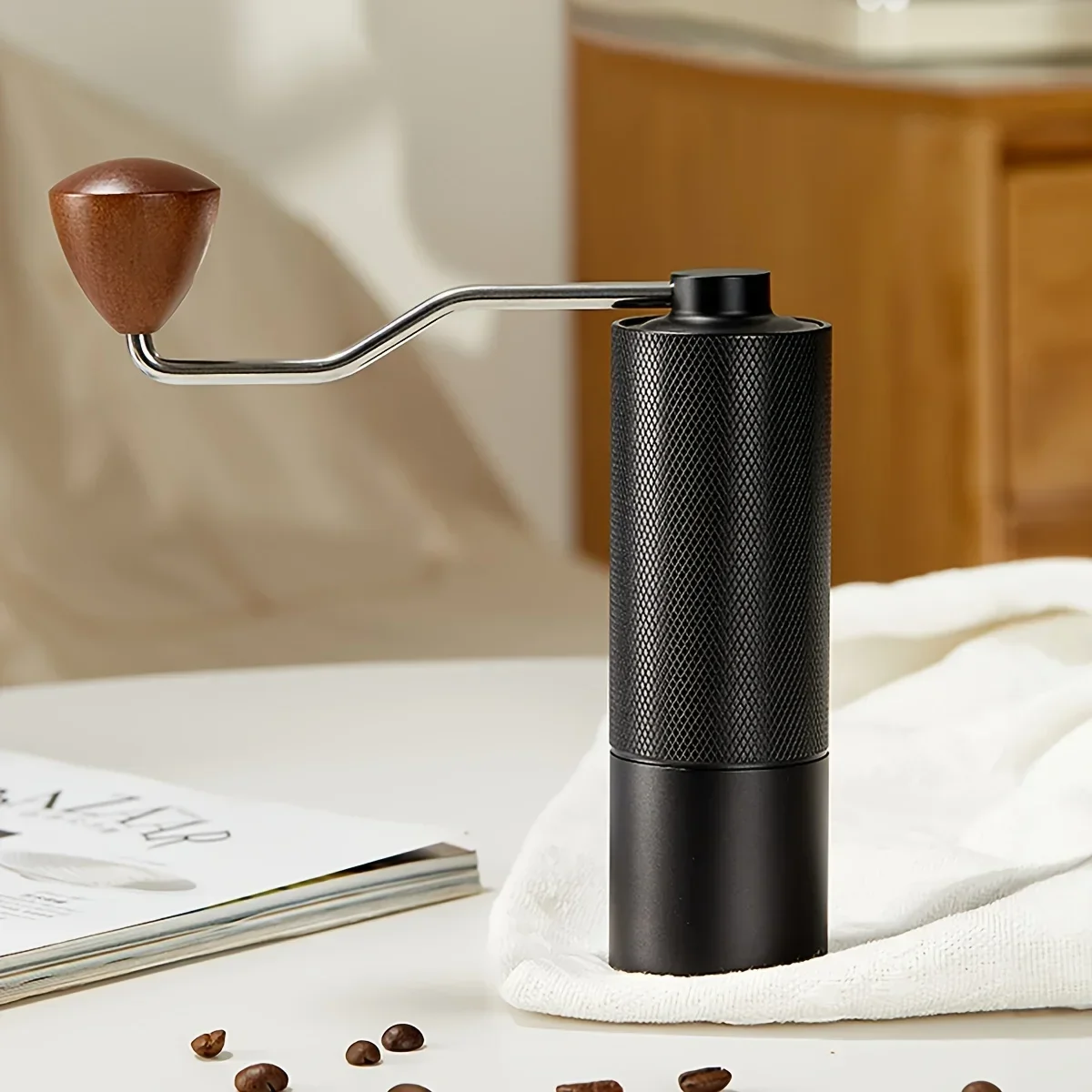
Your grinder’s design significantly impacts your ability to dial in the perfect espresso shot. Understanding its characteristics helps you work within its capabilities and limitations.
Types of Grinders and Their Espresso Suitability
The fundamental distinction between grinder types dramatically affects espresso quality:
- Burr Grinders: Essential for espresso
- Create consistent particle sizes through crushing between textured surfaces
- Produce even extraction by ensuring uniform grounds
Allow for precise, repeatable adjustments
Blade Grinders: Generally unsuitable for espresso
- Create inconsistent particle sizes through chopping action
- Produce both too-fine and too-coarse particles in the same batch
- Lack adjustment precision and repeatability
Within burr grinders, two main burr types exist:
- Conical Burrs:
- Produce a bimodal distribution with some fines
- Often preferred for traditional, full-bodied espresso
Typically generate less heat during grinding
Flat Burrs:
- Create more uniform particle size distribution
- Often preferred for light roasts and clarity-focused espresso
- May generate more heat during extended grinding
Flat burr hand grinders offer exceptional consistency for home espresso enthusiasts seeking professional-level results.
Stepped vs. Stepless Adjustment Mechanisms
The adjustment mechanism on your grinder plays a crucial role in espresso preparation:
- Stepless Grinders:
- Allow infinite adjustment points between settings
- Provide the precision necessary for perfect espresso extraction
Enable micro-adjustments to dial in exactly the right flow rate
Stepped Grinders:
- Offer preset adjustment points with distinct “clicks”
- May have gaps between settings that are too large for espresso
- Often require techniques for “between steps” adjustment:
- Adjusting dose to compensate for grind limitations
- Varying tamp pressure slightly
- Modifying brew ratio to achieve balance
Manual coffee burr grinders with precision adjustment mechanisms offer excellent value for espresso enthusiasts seeking quality without the high cost of electric models.
Grinder Calibration and Maintenance
Regular maintenance ensures consistent grinding performance:
- Burr Wear Impact:
- Dull burrs produce more fines and inconsistent particle size
Typical home grinders need burr replacement every 500-1000 pounds of coffee
Cleaning Frequency:
- Daily: Brush loose grounds from burrs and grind path
- Weekly: More thorough cleaning of retention areas
Monthly: Deep cleaning including burr removal if possible
Alignment Considerations:
- Proper burr alignment ensures even particle size
- Misaligned burrs create inconsistent extraction and can prevent fine enough grinding for espresso
Making Proper Adjustments
Understanding how to adjust your specific grinder model improves consistency:
- When to Adjust:
- Most grinders should be adjusted while running to prevent damage
- Some grinders require adjustment when empty
Check manufacturer recommendations for your specific model
Direction Conventions:
- Most grinders: clockwise = finer, counterclockwise = coarser
- Some grinders use reverse convention
Learn your specific grinder’s adjustment direction
Dealing with Retention:
- Purge 5-10g of coffee after adjustment
- Single-dose grinders typically have less retention
- Some retention is inevitable in most grinders
Fine Adjustment Hand Grinder, Precision Manual Grinder, Travel Coffee Grinder
Price range: $185.11 through $494.63 Select options This product has multiple variants. The options may be chosen on the product pageHand Burr Grinder, Hand Crank Coffee Grinder, Manual Espresso Grinder, Portable Coffee Grinder
Price range: $262.72 through $300.22 Select options This product has multiple variants. The options may be chosen on the product pageManual Burr Mill, Manual Coffee Grinder Stainless Steel, Manual Coffee Mill Grinder, Mechanical Coffee Grinder
Price range: $127.26 through $130.32 Select options This product has multiple variants. The options may be chosen on the product pageHand Burr Grinder, Manual Coffee Grinder Stainless Steel, Precision Manual Grinder
Price range: $183.64 through $187.52 Select options This product has multiple variants. The options may be chosen on the product page
Advanced Techniques: Fine-Tuning For Flavor Profiles
Once you’ve mastered basic extraction, you can use grind adjustments to emphasize specific flavor characteristics. This advanced approach moves beyond “correct” extraction to purposeful flavor profiling.
Moving Beyond Basic Extraction
Perfect extraction isn’t always about achieving textbook parameters—it’s about highlighting what makes each coffee special:
- For naturally processed coffees with fruity notes, a slightly coarser grind may enhance brightness while maintaining sweetness
- For chocolatey, nutty coffees, a slightly finer grind often enhances body and sweetness
Intentional Adjustments for Flavor Enhancement
Skilled baristas make purposeful grind adjustments to highlight specific attributes:
- Emphasizing Acidity While Avoiding Sourness:
- Slightly coarser than standard with a slightly higher dose
- Shorter pre-infusion time if available
Target extraction slightly faster than normal (23-25 seconds)
Enhancing Sweetness and Body:
- Slightly finer grind with standard dose
- Longer pre-infusion if available
Target extraction slightly longer than normal (28-32 seconds)
Balancing Complex Flavor Notes:
- Start with standard grind and carefully adjust based on which notes you want to highlight
- For floral/delicate notes: slightly coarser grind
- For chocolate/caramel notes: slightly finer grind
Adapting Grind for Different Roast Profiles
Different roast levels require different approaches to grinding:
- Light roasts: Generally benefit from finer grinding and higher temperatures
- Medium roasts: Standard grind settings work well
- Dark roasts: Often require coarser grinding and slightly lower temperatures
Espresso coffee hand grinders provide the adjustment precision necessary for these nuanced approaches to flavor profiling.
Water Temperature and Grind Interaction
Temperature affects extraction efficiency and can be paired with grind adjustments:
- Higher temperature + slightly coarser grind: Enhances brightness while controlling bitterness
- Lower temperature + slightly finer grind: Emphasizes sweetness while reducing acidity
These advanced techniques require a solid foundation in basic extraction principles. Once you’ve mastered the fundamentals of precision grind settings, you can begin experimenting with these more nuanced approaches to flavor development.
Tracking Your Progress: Documentation For Consistency
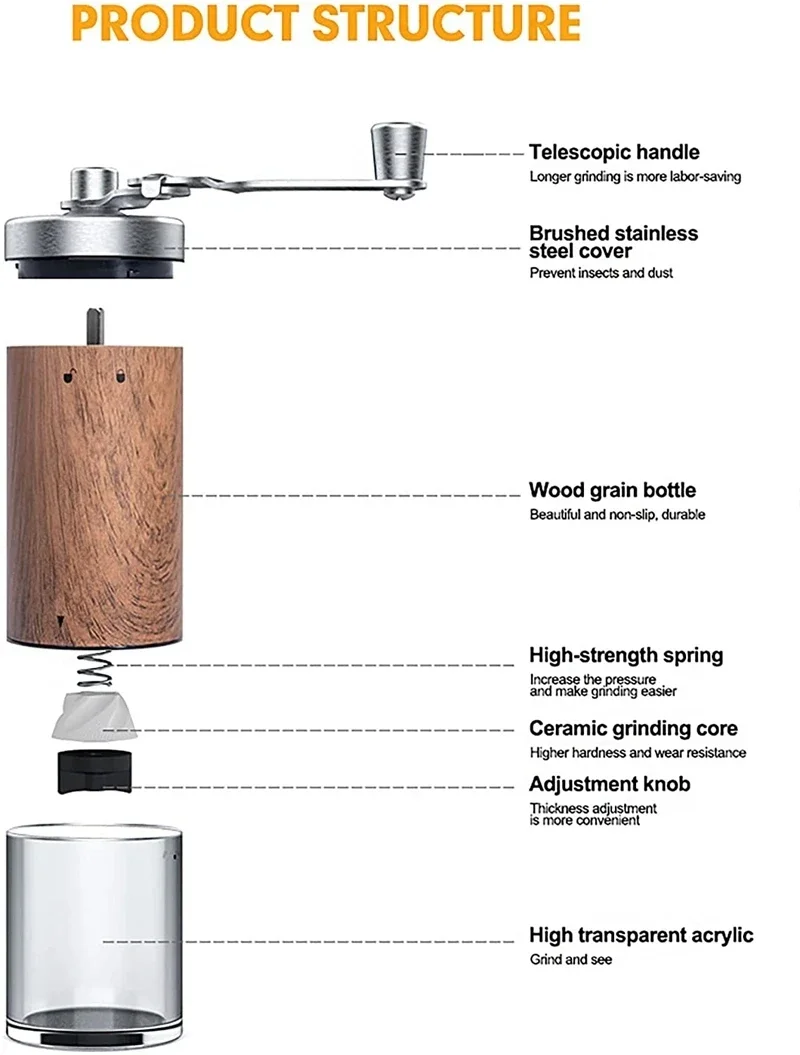
Maintaining consistency in espresso preparation requires systematic tracking. By documenting your process and results, you build a personalized reference guide for future brewing.
The Benefits of Keeping a Brewing Journal
A dedicated espresso log helps you:
* Identify patterns across different coffees
* Repeat successful recipes with minimal trial and error
* Track changes in your equipment performance over time
* Develop a deeper understanding of how variables interact
Essential Variables to Record
For meaningful data collection, track these key elements:
- Bean Information:
- Coffee name, origin, and roaster
- Roast date and when package was opened
Roast level (light, medium, dark)
Dose and Yield:
- Input coffee weight (e.g., 18g)
- Output espresso weight (e.g., 36g)
Resulting ratio (e.g., 1:2)
Grinder Details:
- Grinder used
- Specific grind setting (using your grinder’s notation)
Any adjustments made during the dialing-in process
Extraction Data:
- Total shot time
- Pre-infusion time (if applicable)
Flow rate observations
Sensory Notes:
- Flavor descriptors
- Body/mouthfeel observations
- Balance assessment
- Overall satisfaction rating
Sample Brewing Log Entry
Date: October 12
Coffee: Ethiopia Yirgacheffe, Medium Roast (7 days post-roast)
Grinder: Savor Suite Manual Espresso Grinder, Setting 15
Dose: 18.2g
Yield: 37g
Ratio: 1:2
Time: 28 seconds
Notes: Bright acidity, honey sweetness, medium body. Slight adjustment from yesterday (+1 setting finer). Improved balance, less sourness. Will keep this setting for tomorrow.
Using Your Data for Improvement
Regular reference to your brewing log helps:
* Identify starting points for similar coffees in the future
* Recognize when equipment might need maintenance (changing results with same settings)
* Develop intuition for how different variables affect your results
With consistent documentation, you’ll be able to replicate your best shots and minimize the time spent dialing in new coffees.
The Espresso Journey: Developing Your Palate And Intuition
Becoming skilled at espresso preparation is a journey that extends beyond technical knowledge. As you gain experience, you’ll develop sensory skills and intuition that complement your technical understanding.
The Role of Consistent Practice
Like any craft, espresso preparation improves with deliberate practice:
* Regular experimentation builds pattern recognition
* Tasting many different extractions trains your palate
* Repeated adjustments develop muscle memory and intuition
Most professional baristas report that it takes 3-6 months of daily practice to develop reliable consistency in espresso preparation.
Developing Tasting Skills
Your ability to taste subtle differences in extraction is essential:
- Comparative Tasting:
- Pull two shots with slightly different grind settings
- Taste them side by side to identify differences
Focus on specific flavor aspects (sweetness, acidity, bitterness)
Flavor Vocabulary Development:
- Keep a list of descriptors that resonate with you
- Practice identifying specific flavors in your espresso
- Connect taste experiences to extraction variables
Building Confidence in Adjustments
Over time, you’ll develop an almost instinctive feel for grind adjustment:
* You’ll anticipate necessary changes before pulling shots
* Small variations in flow will immediately suggest specific adjustments
* Visual cues will become more meaningful as your experience grows
Embracing the Learning Process
The path to espresso mastery includes many “failures”:
* Each imperfect shot provides valuable data
* The steepest improvements often come after periods of frustration
* Even professional baristas continuously refine their skills
Remember that espresso preparation combines science and art. The technical knowledge covered in this guide provides the foundation, but your personal experience and sensory development complete the picture.
Beyond The Grinder: Complementary Tools For Extraction Perfection
While grind size remains the cornerstone of espresso excellence, several complementary tools can enhance your results by improving consistency in other variables.
Distribution Tools for Even Extraction
Uneven coffee distribution can undermine even the most perfect grind size:
* Distribution tools help spread grounds evenly in the portafilter
* Even distribution ensures water flows uniformly through the entire puck
* This prevents “channeling” where water finds the path of least resistance
Precision Tamping Equipment
Consistent tamping pressure complements precise grinding:
* Calibrated tampers provide consistent pressure every time
* Precise fit tampers ensure even compression across the entire puck
* Level tampers help prevent angled pucks that lead to uneven extraction
WDT Tools (Weiss Distribution Technique)
These simple tools address clumping that can occur even with excellent grinders:
* Fine needles break up clumps in the ground coffee
* Breaking clumps ensures even water flow throughout the puck
* Particularly helpful for single-dosing and certain bean types that tend to clump
Precision Baskets
The basket that holds your coffee affects how evenly water flows:
* Precision baskets have consistent hole sizes and distribution
* They complement a precise grind by allowing even flow
* High-quality baskets reduce “dead spots” where water doesn’t flow properly
Manual espresso grinders paired with these complementary tools create a system where each component supports optimal extraction. When every variable is controlled, the true impact of grind adjustment becomes even more apparent.
Is Grinding Fresh Really That Important For Espresso?
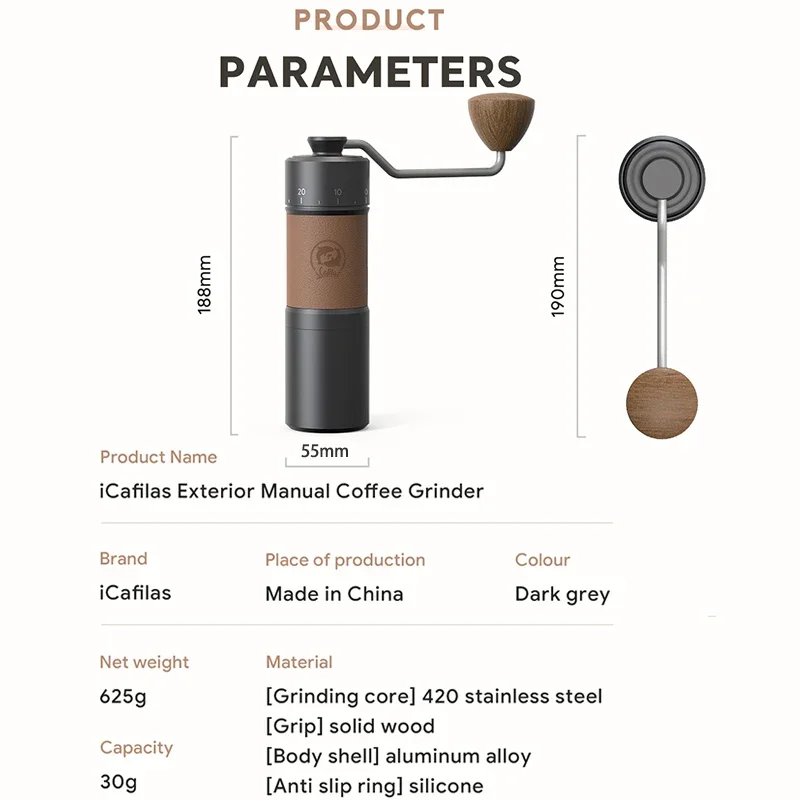
Yes, fresh grinding is absolutely critical for espresso—even more so than for other brewing methods. While pre-ground coffee can produce acceptable results in some brewing methods, espresso’s unique extraction conditions make fresh grinding non-negotiable.
Here’s why freshness matters so dramatically for espresso:
Rapid Oxidation: Ground coffee begins oxidizing immediately, with aromatic compounds and volatile oils dissipating within minutes. Studies show that ground coffee loses up to 60% of its aroma compounds within 15 minutes of grinding.
Critical Extraction Variables: Espresso requires precise control over flow rate. As coffee degasses after grinding, its extraction characteristics change substantially, making consistent results impossible with pre-ground coffee.
Crema Development: The pressure-based extraction of espresso relies on freshly released CO2 for proper crema formation. Pre-ground coffee has already released most of its gases and produces weak, dissipating crema.
Flavor Integrity: The concentrated nature of espresso magnifies any flavor defects. The staling that begins immediately after grinding becomes prominently noticeable in the condensed format of espresso.
For best results, grind coffee immediately before brewing. Even waiting 5-10 minutes between grinding and brewing can produce noticeably diminished results in espresso.
How Often Should I Clean My Grinder For Optimal Espresso?
Proper grinder maintenance directly impacts extraction quality. Coffee oils and fine particles accumulate in your grinder over time, affecting grind consistency, flavor clarity, and equipment longevity.
Follow these guidelines for optimal grinder maintenance:
Daily Cleaning (After Each Use)
- Brush loose grounds from the burr edges and grinding chamber
- Wipe down the exterior and grind collection area
- Run a few beans through after cleaning to remove any loose brush bristles
Weekly Deeper Cleaning
- Remove accessible parts according to manufacturer instructions
- Clean the hopper if your grinder has one
- Use a grinder-specific brush to clean harder-to-reach areas
- Pay special attention to the grind path and exit chute
- Consider using grinder cleaning tablets for thorough removal of oils
Monthly Thorough Cleaning
- If possible, remove the burrs according to manufacturer instructions
- Clean behind and around burrs with a soft brush
- Check for signs of wear or damage
- Reassemble carefully, ensuring proper alignment
- Recalibrate your grinder if necessary after cleaning
Signs that indicate your grinder needs cleaning include:
* Inconsistent shot times with the same grind setting
* Clumping that wasn’t previously occurring
* Noticeable flavor degradation or unexpected bitterness
* Visibly oily residue on burrs or in the grind path
Regular cleaning is especially important for espresso grinding because the fine particle size makes clogs and retention more likely. A clean grinder provides more consistent results and more accurate grind adjustments.
Can Different Baskets Require Different Grind Sizes?
Yes, different portafilter baskets can require different grind sizes even on the same machine. The basket design significantly impacts flow dynamics and extraction:
How Basket Design Affects Grind Requirements
- Precision vs. Standard Baskets:
- Precision baskets (like VST or IMS) have consistent hole sizes and distribution
- They typically require a slightly finer grind than standard baskets
The improved flow consistency allows for more even extraction
Single vs. Double vs. Triple Baskets:
- Larger baskets (triple) generally work better with slightly coarser grinds
- Smaller baskets (single) often require finer grinding
This is due to the difference in puck depth and water flow path
Straight vs. Tapered Baskets:
- Straight-walled precision baskets typically require finer grinding
Tapered baskets are more forgiving but less consistent
Ridged vs. Ridgeless Designs:
- The ridge mainly affects ease of removal rather than extraction
- However, the internal geometry that accommodates the ridge can affect flow
When changing basket types, expect to adjust your grind. Typically, moving from a standard basket to a precision basket requires grinding 1-2 settings finer. Conversely, increasing basket size (double to triple) might require grinding 1-2 settings coarser.
What’s The Ideal Grinder For Home Espresso Enthusiasts?
The ideal espresso grinder combines precision adjustment capability, consistent particle size, minimal retention, and durability—all within your budget constraints.
Key Factors for Espresso Grinder Selection
- Adjustment Precision:
- Stepless or micro-stepped adjustment mechanism
- Clear, repeatable settings
Ability to make very small incremental changes
Burr Quality and Design:
- Hardened steel or ceramic burrs designed for espresso
- Proper burr alignment from factory
Burrs specifically designed for fine grinding
Retention Characteristics:
- Low retention to minimize waste when adjusting
- Easy access for cleaning
Single-dosing capability if that’s your preference
Consistency at Espresso Range:
- Capable of grinding fine enough for light roasts
- Produces uniform particle size at espresso settings
- Minimal clumping without excessive fines
For home enthusiasts, high-quality manual grinders often provide excellent value, offering commercial-level grind quality without the high cost of electric equivalents. The direct control and connection to the grinding process also helps develop a better understanding of how grind adjustments affect extraction.
For those seeking professional-level resources, La Marzocco offers an excellent guide on calibrating espresso grinders.
The perfect grinder is one that allows you to make precise, repeatable adjustments while producing consistent particle size—and fits within your budget and space constraints. Remember that grind quality has a greater impact on your espresso than almost any other factor, making this an important investment in your coffee journey.

